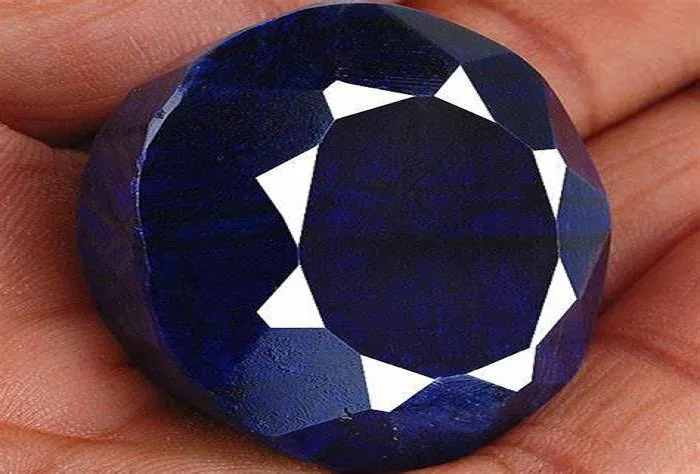Blue sapphires are among the most sought-after gemstones in the world. Their deep, mesmerizing blue hues captivate jewelers and collectors alike. These gemstones belong to the corundum family, which also includes rubies. What makes blue sapphires special is their rarity, durability, and stunning color variations. The finest blue sapphires come from a few select locations around the globe, and their value depends on factors like color, clarity, cut, and carat weight.
The Importance of Color in Blue Sapphires
The color of a blue sapphire is its most important feature. The most prized shade is a rich, velvety blue known as “cornflower blue.” This color is often associated with sapphires from Kashmir, a region famous for producing some of the most exquisite gems in history. Burmese sapphires also display a deep, intense blue, while Ceylon sapphires from Sri Lanka tend to have a lighter, more vibrant tone. The presence of trace elements like iron and titanium gives sapphires their blue color. The more even and saturated the hue, the more valuable the stone becomes.
Clarity and Cut: Enhancing the Sapphire’s Brilliance
Clarity plays a significant role in determining a sapphire’s quality. Unlike diamonds, sapphires do not need to be completely free of inclusions to be valuable. Some inclusions can even prove a sapphire’s natural origin. However, too many visible flaws can reduce the stone’s brilliance and durability. The best sapphires have minimal inclusions that do not interfere with light passing through the gem.
The cut of a blue sapphire affects its beauty and sparkle. A well-cut sapphire reflects light evenly across its surface, enhancing its color and brilliance. Skilled lapidaries shape sapphires into various cuts, including oval, round, cushion, and emerald cuts. The most common cut for blue sapphires is the oval, as it maximizes color and minimizes waste from the rough stone.
Carat Weight and Rarity: Why Size Matters
Carat weight influences a blue sapphire’s value, but larger stones are exponentially rarer. Fine-quality sapphires over five carats are exceptionally scarce and command high prices. Smaller sapphires are more common but can still be valuable if they possess excellent color and clarity. Because sapphires are denser than diamonds, a one-carat sapphire will appear slightly smaller in size than a one-carat diamond. Buyers should focus on the gem’s overall quality rather than just its weight.
The Role of Origin in Sapphire Value
The origin of a blue sapphire can greatly impact its worth. Kashmir sapphires are the most coveted due to their unmatched color and limited supply. These gems were mined in the late 19th and early 20th centuries, and few remain on the market today. Burmese sapphires are also highly prized for their deep blue tones. Sri Lankan sapphires are more abundant and come in a wider range of shades, from light blue to vivid teal. Other sources include Madagascar, Australia, and Thailand, each producing sapphires with distinct characteristics.
Common Treatments in Blue Sapphires
Treatments are common in the sapphire trade. Most blue sapphires undergo heat treatment to enhance their color and clarity. This process is widely accepted as long as it is disclosed to buyers. Unheated sapphires are rare and command premium prices. Other treatments, such as diffusion or fracture filling, are less stable and may require special care. Consumers should always ask for a gemological certificate to verify a sapphire’s treatment status before purchasing.
The Symbolism and History of Blue Sapphires
Blue sapphires have a long history of symbolism and significance. Ancient civilizations believed sapphires represented wisdom, nobility, and divine favor. Kings and clergy wore them as protection against harm. In modern times, sapphires remain popular in engagement rings and high-end jewelry. The most famous example is the sapphire engagement ring once worn by Princess Diana and now by Kate Middleton. This royal connection has further boosted the gemstone’s popularity.
Investing in Blue Sapphires: What Buyers Should Know
Investing in blue sapphires requires knowledge and caution. Due to their rarity, high-quality sapphires can appreciate in value over time. However, the market is also filled with imitations and synthetic stones. Synthetic sapphires have the same chemical composition as natural ones but lack the same rarity and value. Buyers should purchase from reputable dealers and insist on certification from recognized gemological laboratories like GIA or AGL.
Caring for Your Blue Sapphire Jewelry
Caring for blue sapphires ensures their lasting beauty. Sapphires rank 9 on the Mohs scale of hardness, making them durable enough for everyday wear. However, they can still chip or scratch if subjected to harsh impacts. Cleaning sapphires with mild soap and warm water keeps them sparkling. Ultrasonic cleaners are generally safe unless the stone has fractures or treatments that could be damaged. Storing sapphires separately from other jewelry prevents scratches.
The Future of Blue Sapphire Mining
The future of blue sapphire mining faces challenges. Many historic deposits are nearly exhausted, and new discoveries are rare. Ethical mining practices are becoming increasingly important to consumers. Miners in some regions face difficult working conditions, and buyers are now more conscious of sourcing gems responsibly. Lab-grown sapphires offer an alternative, though they do not hold the same value as natural stones.
Conclusion
In conclusion, blue sapphires are timeless treasures cherished for their beauty and rarity. Their value depends on color, clarity, cut, and origin, with the finest specimens fetching astronomical prices. Whether set in a royal crown or an engagement ring, these gems continue to captivate with their deep blue allure. Buyers should educate themselves, seek certification, and purchase from trusted sources to ensure they acquire a genuine and high-quality blue sapphire. With proper care, these magnificent stones can be passed down for generations, retaining their brilliance and significance.
Related Topics:
- Where is Sapphire Blue Hole?
- Light vs Dark Blue Sapphire: Which is Better for Your Jewelry?
- Why Does White Sapphire Turn Yellow?


